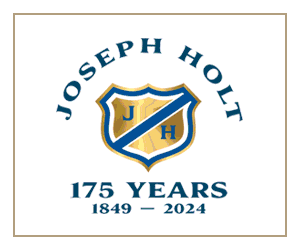Jonathan Schofield thinks the provision of beautiful parks should be part of health policy
PEEL Park is looking beautiful.
Despite the browning of this long hot early summer there’s a serenity and crispness to the place, with the circular rhythm of the main flower beds, the grand stairs on two sides, and a broad river on another. A focus has been added with the return of the statue of Joseph Brotherton, MP. The change of ground level, 22 metres (75ft) from the back of Salford Museum and Art Gallery, to the main area of the park, adds visual interest. There are numerous notice boards to give the place a back story. The only bum note is the ugly University of Salford building, Maxwell House, which was unfortunately sited at the main entrance to the park in the fifties.
There’s money in place at Peel Park for park rangers to care for the place until 2020 and, it must be hoped, more funding can be found to continue their good work. The cost of the transformation has been £2.5 million from Heritage Lottery funding but also the husbandry of people like Joe Palframan, the park ranger, who has put heart and soul into getting this public space this far. Talk to him and you can see the pride in his eyes, and the determination to build on the good work. “Yes, I’m proud of what we have achieved and how far we’ve come, but there’s more to do yet.”
Peel Park, named after the Prime Minister and its major donor, Robert Peel, was one of three Salford and Manchester parks opened on the same day on 22 August 1846. The others were Philips Park in Clayton and Queens Park in Harpurhey. These three were the first truly municipal (corporation) parks built from new in the UK. Each of them was required to contain formal gardens, playgrounds, provision for archery and quoits, together with skittle and ball alleys, a refreshment room, one or more fountains, and ‘retiring places’. The competition to design the parks was won by Joshua Major & Son of Leeds.
On Sunday the entire working population sinks into a state of abject sloth or listless apathy
The motivation was clear as contemporary comments reveal: it was a moral mission. This is James Kay writing with condescension turned to maximum.
‘Dear sir,-I hasten to give my testimony in favour of your proposal to connect public parks with great towns, in order to promote helpful recreation amongst the working classes. The operative population of Manchester enjoys little or no leisure during the week, the whole available time being absorbed by their occupations. The few hours which intervene between labour and sleep are generally spent either at the tavern, or in making some necessary family arrangements. On Sunday the entire working population sinks into a state of abject sloth or listless apathy, or even into the more degrading condition of reckless sensuality. Were parks provided, recreation would be taken with avidity, and one of the best results would be a substitution with innocent amusement at all times for the debasing pleasures now in vogue.’
Local MP Mark Philips and a chief supporter of the parks spoke more sympathetically, “I would hope that these public walks, these open spaces of ground, will not be placed in the outskirts of the town, too great a distance from the working population themselves; that they will not become places of resort for the wealthy parts of the community alone, in the immediate vicinity of their own dwellings, but that the greatest possible care will be taken in the selection of these places so as to secure the greatest possible advantage to the greatest number of the population. By bringing together all classes the mutual improvement of all classes must result, together with a greater degree of confidence between one class and another; for the more they mix with one another the more they will understand one another.”
Yes, it is top down language, it is not how we speak now, but much of what Philips said applies today. It has been one of the terrible derelictions of duty of national and local government that from the eighties onwards they forgot the motivation that created the parks in the first place, and once cherished beautiful places became green slums.
Now it seems we have started to relearn those lessons. Give people better living conditions, make the places where they live contain at least some beauty and the benefits in terms of well-being, respect and identity are huge.
Yet Peel Park’s renaissance and those elsewhere at, say, the Alexandra Parks in Moss Side and Oldham, are a drop in the ocean. One of those other parks from 1846, Queen’s Park in Harpurhey, is a disgrace and this in an area that has very low health indices and much poverty. In the fifties and sixties the public parks of this region were a byword for good maintenance and beauty.
The National Health Service (NHS) is a vast sponge that soaks in more and more cash. Theresa May is promising in the coming years to pump in £20 billion to add to the already £125 billion annually being spent in England alone. Meanwhile the main part of the NHS devolution to Greater Manchester concerned a more holistic approach, treating the whole person, catching problems early and trying to save lives, health and money by taking away the need for hospital visits.
In this respect, the re-creation of beautiful parks with good civic sports facilities (not private gyms) in towns and cities along with a general boost to the public realm should be treated as a part of UK health provision. Not directly of course, because the wastage in the NHS is appalling, but intellectually so. Ball-park figures these, if you forgive the pun, but why not take £5 billion of that extra £20 billion per year and over several years bring our parks and green spaces, in particular, up to scratch so they become as well-used as they once were.
Those three original parks, although run by Manchester and Salford corporations (now the city councils), were largely funded through philanthropy. That wouldn’t work, sadly, in 2018, so state support is the key. £5 billion a year would mean 200 parks improved every year if capped on average at £2.5 million - or 1,000 every five years. Simplistic calculations these, but providing a very healthy statistic.
Where is it?
Peel Park is about three quarters of a mile from Deansgate at the junction with Bridge Street. The best access is from the Crescent by walking behind Salford Museum and Art Gallery. The walk from the city centre through the hectic and very welcome redevelopment of Chapel Street, Salford, is entertaining in its own right. There are regular events at the Park and an active Friends group should recent incomers into the new Chapel Street area flats want to get involved.














